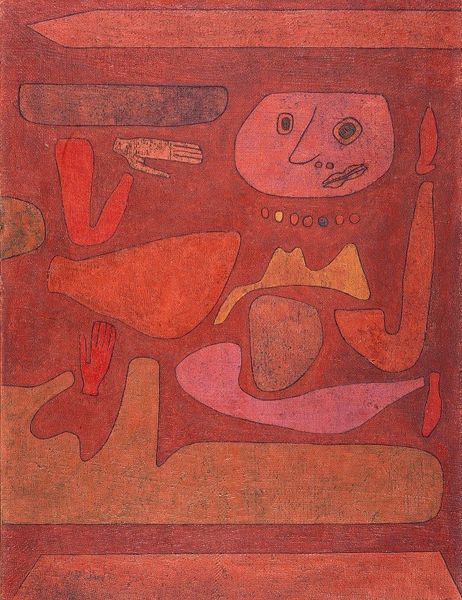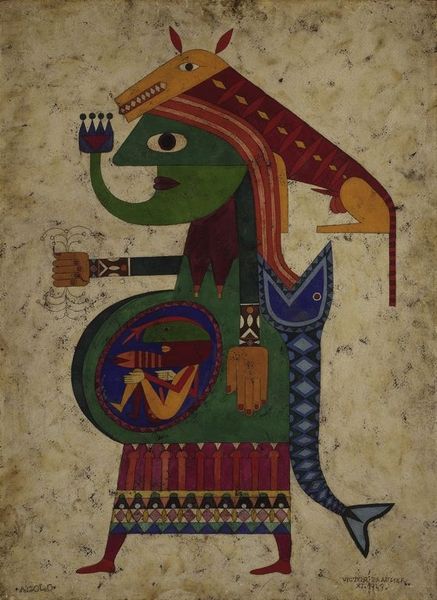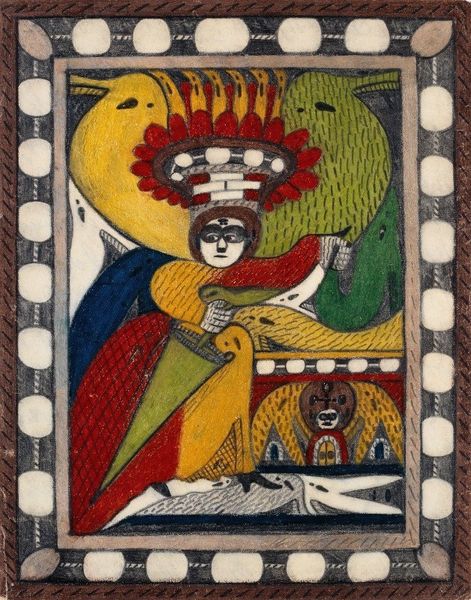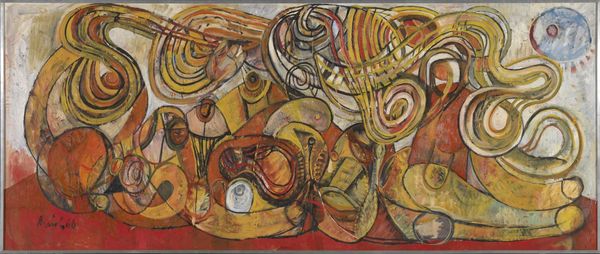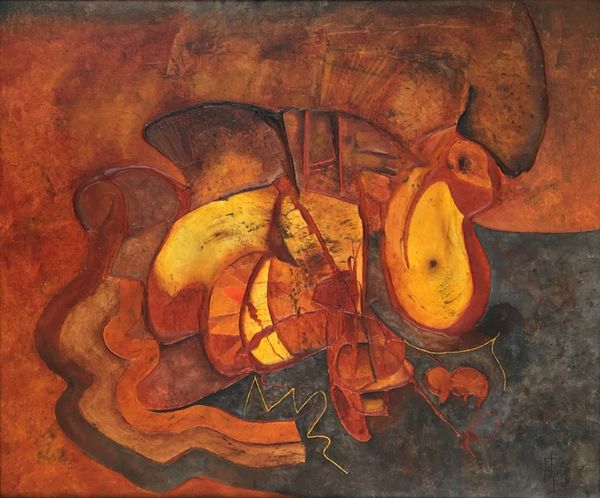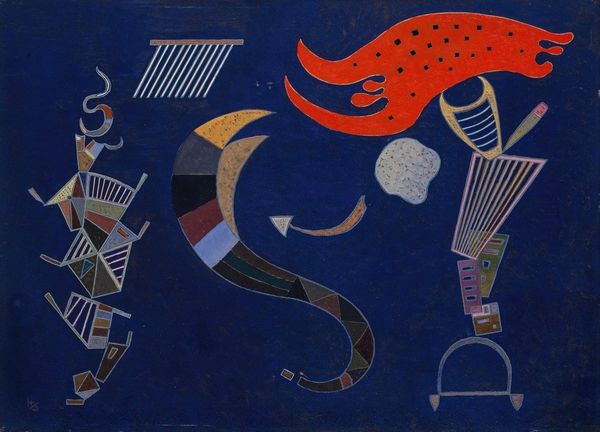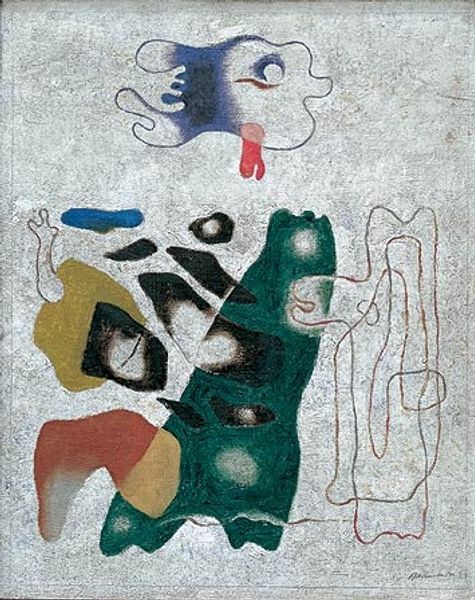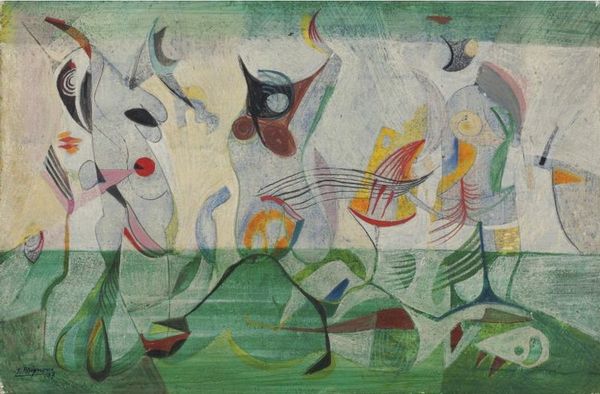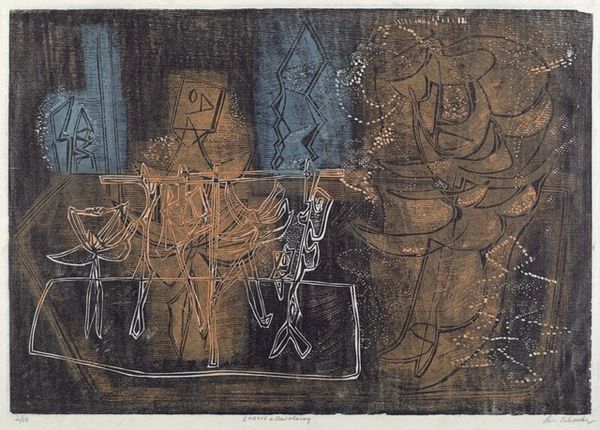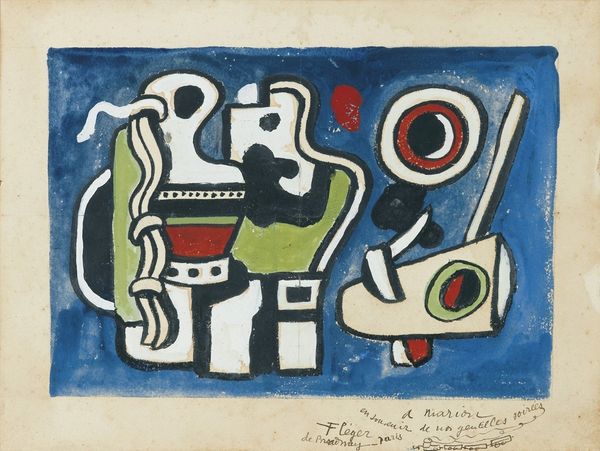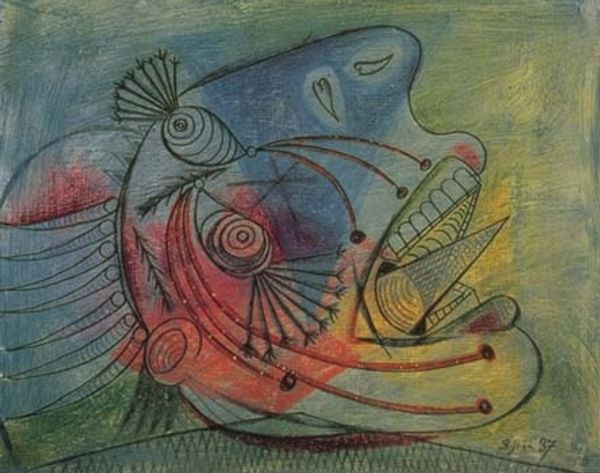
print, watercolor
#
water colours
# print
#
watercolor
#
geometric
#
naive art
#
modernism
#
watercolor
Dimensions: 292 x 349 mm Sheet:348 x 432 tears on upper left and upper right of sheet.
Copyright: National Gallery of Art: CC0 1.0
Curator: Let’s discuss Anthony Velonis’s 1939 print, “Decoration Empire”, combining print and watercolor. It’s certainly a vibrant arrangement. Editor: My first impression is almost childlike—a burst of colors and shapes, though I’m struggling to decipher any immediate narrative. It’s like looking at a collection of disassembled parts. Curator: In the center we have, undeniably, the still-life setup: grapes, flowers, a blue vase, even what appears to be an apple. Do these classic motifs speak to you at all? What deeper connotations or archetypes are at work here? Editor: The materials themselves catch my eye. The combined effect of print and watercolor lends a somewhat rough, textured appearance. This points towards a more mass production and labor element—considering its accessibility via printing techniques of that era. There's nothing rarefied about it; it’s almost a populist expression. Curator: That’s interesting. The somewhat primitive rendering combined with the use of fruit and floral motifs often symbolize abundance, nature, fertility. Maybe Velonis is making a comment on societal values of wealth and nature using this style. It feels intentionally “naive” as you mention. Editor: The execution certainly reinforces that sentiment. Look at how the shapes almost disregard formal perspective. It's more about the act of depicting, about consuming and making something digestible for a broad audience. The flat application gives it an every-man quality, don’t you think? Curator: I agree to a point, but the abstract construction disrupts an overly simple read. The motifs remain slightly cryptic, thus complicating this notion. The lack of perfect symmetry, or resolution asks the question "how do these symbols inform the world?". Editor: So, for you, its disruptive nature creates a symbolic landscape questioning values. Whereas for me, it is about breaking the standards that lead up to it via form and method. Interesting. Curator: A lovely discussion! Hopefully listeners now see multiple potential points of entry to this particular work. Editor: Exactly, the dialogue itself mirroring the many possible hands, minds, and purposes involved in a print like this.
Comments
No comments
Be the first to comment and join the conversation on the ultimate creative platform.



